|
Interviewer’s note: I met José Juan in 2013. I had just
returned to Spain from India and was participating in a 21-Day Kindness
Challenge. During a 21 day period 5000 people from all over the world
performed an act of kindness every day, totalling almost 11,000
transformative actions! The first day of the challenge I decided to buy a
cake and gift it to someone random on the street. I wanted it to be
anonymous so I needed to enlist a partner in kindness. The first person I
met was José Juan! He gave away the cake and since then we have been
connected in many adventures of service and generosity, including
community experiments like Awakin Circles (which we started in his home
after our chance meeting) or experiential retreats like Reloveution. José
Juan is a permanent source of inspiration for those who meet him.
- Joserra G.
José Juan Martinez (JJ) is no stranger to success. An
industrial engineer by training he built an impressive career at Bekaert,
a multinational automobile company. But despite a string of professional
accomplishments, when he hit 40, the predominant feeling he experienced
was that of emptiness. Seeking to address this void he began an
exploration of the world’s wisdom traditions that continues to this day
-- and alongside his personal evolution he’s also built valuable bridges
across geographies, cultures and fields of endeavor.
In this edited interview José Juan reflects on his
remarkable journey and discusses everything from the crisis in our current
leadership models, to how we can create space for empathy and
collaboration in competitive environments.
Joserra (JR): Please share with us a little bit about
your journey and its different experiments and learnings.
José Juan (JJ): Thank you! I have lived through quite
an evolution in life. Since I got good marks in school I decided to study
Engineering, maybe because that was the thing I was “supposed to do”.
I didn’t choose Engineering as a vocation. My studies and my first jobs
were all very heady, very technical. And after some time, in spite of my
social and financial status, I felt like something was missing, I felt
like there was a hole in my stomach… I didn’t know what to call it,
but I was not happy. I ended up diagnosing myself as an emotional
analphabet -- I was emotionally illiterate.
I have always been a curious man so I decided to do more
research to better understand what was happening to me. I read somewhere
that my symptoms matched what was called: “The Unhappy Successful Man
Syndrome”. And this syndrome was so common that it had been catalogued.
Many people around the world are working hard in big companies, climbing
the ladder with a lot of sacrifice and dedication and when they arrive to
the top of that ladder they realize they have put the ladder on the wrong
wall. A strong sense of having been deceived comes over them.
For me, this happened when I was 40, and I am just happy
it happened before I was 65. I’ve seen it happen to many people at that
stage. People who retire and then feel completely empty. All their life
they pursued one goal, one lifestyle, and one paradigm of success, and
when they reach the top they realize the pursuit was an empty pursuit.
So at the age of 40, after feeling that emptiness, I
started asking myself: What is my definition of a successful life?
The opportunity to think about this question came while
I was working for Bekaert. Every year, the entire management team would go
on a two day retreat to reflect on the mission, vision and values of the
company, and define the strategy and the goals for next three years. In
one of those retreats I had a great thought: The most important company in
my life is me, so, why not hold this same kind of retreat for myself?
Every year, since 1991, I’ve spent two days by myself
to reflect on my mission in life, and to face that great philosophical
question: What is the purpose of my life? Is it money? Is it professional
success? Is it something else? During these retreats I follow the same
format we follow in our business retreats, only this time the company’s
name is José Juan SA.
JR: And after some time you decided to share that
personal process with more people...
JJ: Yes, while I was teaching in University, I shared it
with my Engineering students and now, a few years later, they remember me
not because of the theories I taught, but more because of the Self Leading
process I shared with them. I realized this could be of great help for
more people and since then we’ve been organizing three-day retreats
where we explore intellectual intelligence with emotional intelligence and
also body intelligence. In the companies I work with, people talk a lot
about leadership and my premise for that is: How am I going to be able to
lead others if I am not able to lead myself? I believe when you do some
kind of personal work, then you are more fit to help others.
I am very passionate about this; I feel we have to teach
these values, especially in school. I feel the leadership of teachers is
essential and so is parental leadership; leadership understood as the
capacity to influence others, something we all have. We can all influence
our surroundings, our friends and family. But it’s important to have a
our own self-knowing process first. For example, if parents can observe
and reflect on how they were educated and generate insight from that, they
will be able to do a better job with their kids.
JR: Do you think there is a leadership crisis right now
in Spain and the world?
JJ: I think so. Not only in the political arena where it
seems obvious, but also in many other fields: business, education,
religion, organizations… I think we can tell when someone hasn’t done
that personal work. Studies and our own wisdom tell us that all the great
leaders in history went through some kind of self-knowing process, a
process where they could discover their strengths, and discern potential
areas of improvement. They were asking important questions. Questions
like, “How can I be surrounded by people that complement me? How can I
generate shared leadership, even when I am in the position of being the
leader?”
At some Christian monasteries, like the one in Santo
Domingo de Silos, they apply a very interesting model of leadership called
“Saint Benedict's Rule”. It’s the rule that inspires the community
at the Benedictine Monasteries and it was written by Saint Benedict 1500
years ago. For them, the Abbot is the boss, but there is a lot of
participation and collective inquiry. The rule says: “At the monastery,
whenever we have to talk about important matters, the Abbot will bring the
whole community together and will personally expose the issue. Then he
listens to all the brothers, after this he will reflect alone, and then
decide what the appropriate action to take is. Do everything with advice
from others and you will never regret anything.”
So in this case, the Abbot takes decisions, but he has
listened to all the monks before that. He is a leader and he’s
facilitated everyone’s participation. It’s a very interesting kind of
leadership that has proved valid for more than 1500 years. I think current
leaders should study these kinds of models.
JR: Sometimes you talk about Servant Leadership. I don’t
know if you like the word “facilitator”. Personally I see a leader as
a person who facilitates things for others, someone who makes things
easier. I remember how in Bekaert, you had a very good experience in that
sense, you found leaders who were always thinking about how to serve
others.
JJ: Yes, I have realized the words 'leader' and
'leadership' have quite negative connotations for a lot of people, maybe
because they are overused or maybe because they make them think about
leaders they don’t like
I really like the idea of leaders as facilitators, and
the idea that leaders are people who make the work of others easier, I
think that’s the essence of what is called Authentic Leadership. In
business people also talk of Situational Leadership. Sometimes there are
very young teams that might require a more directive kind of leadership,
but for me it’s true that the “great state of leadership” is Servant
Leadership. In Bekaert, we used to say that the words that a leader should
use most are: “What can I do for you?”. I practiced that and it’s
amazing because those words have a deep meaning, they say something like:
“I trust you, you know what you are doing, and I am here to help you”.
In this way everyone in the company feels more empowered to use their own
talent, and they feel more ownership over the organization and they feel
more valued.
This type of leadership seems opposite to the
hierarchal, pyramidal one, which is the traditional model that big
companies are used to, very inspired by the leadership style of the Army,
where one person is there to mandate, the other one to follow orders. When
you tell someone: “What can I do for you?” they think, “What’s
wrong with this person? Maybe he is a weak boss.” In China for example
it’s hard for many people to understand this type of Servant Leadership,
because they are used to a very hierarchical lifestyle. People act less on
their own when they fear a mistake or a punishment. Many workers won’t
move a finger unless it’s an order, and that limits their creativity and
their talent.
I also realized that you cannot jump from one kind of
leadership to another, you have to evolve progressively. As within people,
so it is within organizations, there has to be a progressive evolutionary
process. For some time I was frustrated in China because I tried to change
the kind of leadership from one extreme to the other without considering
their cultural background.
JR: A friend of mine Jayeshbhai Patel, director of the
Gandhi Ashram in India often says, “Don’t be a Leader, be a Ladder”,
meaning don’t take center stage, but instead be an instrument to help
people rise to their potential and gain greater perspective for
themselves.
JJ: Yes, I share the belief that the final mission of a
leader is not to get more followers, but to create more leaders. I also
like the expression Authentic Leadership. An Authentic Leader knows where
to be in every moment, he is up front when things are not so good, and he
is at the back when things are working. This is very different to what we
see nowadays. There are many leaders who are unconsciously driven by their
ego, people who have a great passion to be up front in photos.
JR: In this respect you talk about the 4 H’s that an
authentic leader needs to develop…
JJ: Yes! It’s very fitting because the corresponding
words in English also start with H. And in Spanish the ‘H’ has two
interesting connotations, one is that it is silent, and in that sense,
authentic leaders prefer listening to talking, and the other is the ‘H’
for ‘hacer’ (‘doing’ in Spanish), I feel an authentic leader is
defined not by what he/she says but by what he/she does.
These are the 4 ‘H’s
- Honesty: Honesty comes first. A good leader has a base
of honesty, not only integrity or lack of corruption, but also alignment
between what he/she thinks, feels, says, and does. Honesty understood like
this is the basis for trust, if you are not able to build trust, how are
you going to be a good leader?
- Humility: Humility understood not as ‘thinking less
of oneself’ but ‘thinking less about oneself’ and more about the
people you work with. This kind of humility is very intertwined with the
question: What can I do for you? The servant leadership approach is always
testing your humility. Humility allows us to keep learning, growing and
improving. The Japanese call it ‘Kaizen’. There is always room to
improve. Who wants perfect leaders who know everything and never recognize
their mistakes?
- Humanity: We are dealing with people not only things
or projects. Authentic leadership has to do with methodologies but more
importantly it understands emotions. An authentic leader has to have
insight into human nature and be able to contemplate its four facets
(physical, intellectual, emotional and spiritual). He/she has to be
skillful in identifying and engaging other people’s talent, and also in
helping people find their own gifts.
- Humor: A sense of humor can defuse a lot of tension.
In these times, positivity is essential in our leaders. A leader who is
always worried and who never smiles isn’t helpful. People now talk about
emotional leadership as well. If the leader is in fear, then that extends
to the rest of the team, and the same happens with their happiness and
enthusiasm; emotions are contagious. The authentic leader needs to know
and manage his/her emotions, because even though they are invisible, they
are transmitted. It’s very easy to know when a leader is giving or
taking energy from you, even if they don’t say or do anything.
In a Head, Heart, Hands retreat where we realized the 4
Hs form a great Ladder :)
JR: For me, a very interesting learning from a couple of
the organizations I work with is the concept of holding space. The leader
is a trustee of space for you so that you can grow integrally as a person.
This is a kind of leadership that is fueled by a deep trust in others, an
innate trust in their intelligence and wisdom. In some sense, it is a ‘Do
Nothing’ style of leadership, where you lead simply by the example of
your being, and hold space for others to explore their own gifts and
talents in a safe space.
JJ: Yes, once I was asked: what is the quote that has
inspired you the most in your professional life? I will always remember
the words of my first boss in Bekaert, José Luis Martínez (someone who I
respect a lot). We were in the middle of big changes and improving
processes and he told us: “Out of every ten things we try, one is
successful, so we have to try 100 things for 10 to work out. Try with no
fear, and all mistakes can go to my account”. The only constraint he
gave us was that our experiments couldn’t go against our basic values or
principles. This created the kind of space that you talk about, where
people can develop their creativity and talent.
There was full coherence between what he said and what
he did. He was an example of humility, always wanting to learn, always
studying new things and practicing what he learnt. This generated a
culture in the organization that is still alive even now.
A few weeks ago, I was in Madrid at a course taught by
Dr. Jeffrey Liker, someone who has been studying the Toyota’s Lean
Manufacturing methods for 40 years, and there at the course was my former
boss José Luis Martínez, 70 year old, still learning and improving! With
Jeffrey K. Liker in Madrid (June 2016)
JR: I also remember your work at Bekaert as Total
Quality Manager, you traveled around the world and you started a project
to implement a very holistic management model, you called it the Quality
House, and that house was rooted in three fundamental principles that you
distilled after research across factories and cultures…
JJ: Yes. Seven years ago, the president of our company
changed. The new president saw that we were growing a lot in China and
other Asian countries; we contracted more than 1000 new people every year.
He saw that this model of growth was not sustainable. We started talking
about Sustainable and Profitable Growth. It was profitable but we were not
sure if it was sustainable. He used to compare it to a train track that is
growing, but one of the rails is growing faster than the other; unless we
balanced it, the train was going to derail. In that context of excessive
growth, we decided to create a base of values that went beyond mere
growth.
In this sense, we used to talk about 'development' as a
better paradigm. Constant improvement or development doesn’t always mean
growth. Today’s paradigm is: “If you don’t grow, you die”. Well, I
am not totally sure about that, I prefer to think that if I don’t
develop, then yes, I die. You can always develop, but you cannot always
grow, because we are in a system with limited resources -- our world. One
example I like to use to explain the difference between development and
growth is the cemetery: cemeteries always grow, but they don’t develop.
Development includes more intangibles like values, organizational
consciousness, sustainability.
I and the new president of the organization fell in love
at first sight. As a university professor, I used to explain Value Based
Management to my students. I shared this approach with the president and
we thought it could be a solution to ensure the system’s sustainable
growth. The president then proposed that I elaborate a Value Based
Management model to apply in 21 factories around the world.
To start with, we chose a representative from the
different geographical areas with the idea of building a model together
and then extending the work to the different factories. With that goal we
chose a representative from United States, China, Turkey, Slovenia,
Russia, Brazil and Belgium. It was a significant effort because every 15
days, we had to gather in Belgium for a couple of days. I started the
process of trying to find the values that united us. What values unite
Europeans, Americans, Chinese, Russian and Turkish people? I had a list of
140 values and I told them, “Let’s select the values that are common
to all of us.” After various meetings and discussions we realized the
process was not moving forward. The values we had were not transpersonal
or trans-cultural values. It’s very different how every person and
culture interprets them.
We were a bit lost but then I had the luck of a very
important encounter in my life. I met Stephen Covey, who wrote the book
'The 7 Habits of Highly Effective People.' I went to a conference in
Madrid and he was very sought after, but since I have not much hair like
him, I think he liked me. He said to me, “We both go to the same
hairdresser!” (laughs).José Juan with Stephen Covey
I shared the trouble I was having in determining the
common values across cultures, and he quickly replied: “Don’t work
with values, work with principles. The difference between values and
principles is that the values are individual, arguable and subjective. You
can value fame, money, stillness… But principles are universal, they are
intrinsic to human race; they are always there, acting, like the law of
gravity.” Stephen said that there are a lot of values but not so many
principles.
Another interesting fact regarding values and principles
is that values run our actions; for example if I value fame or power or
money, my actions will move accordingly, but principles act after action
and determine the impact of our actions. If you do something without
respect for another person then the consequences of that act will be out
of your control. Stephen shares the example of Hitler. Maybe he had the
value of family, maybe he was charming with his family, or treated his
wife in a respectful way… But his actions didn’t follow the universal
rules of respect, so then the consequences arise, consequences that are
set by those principles. Values drive your actions and principles, the
consequences.
With this message he gave me a very good clue. In the
next meeting in Belgium I said: “Let’s see what are the great threats
in the world today, what are the consequences of acting against the
principles.” We tapped into what experts call: “The Great Threats”.
One of the emergent themes was the inequity, within and across countries,
another threat was terrorism, another the ecological crisis.
We all agreed that these were great threats, and
according to Stephen Covey, these were the consequences we were
experiencing in our world because we were not acting in accordance with
universal principles. So then we said, if these are the consequences, what
are the principles we are breaking with our actions? And we got three:
1. Solidarity: I am not alone in the world. Inequity
comes from not understanding our fundamental interconnection. We talked
about the famous subprime mortgages (with high risk), where people were
thinking: “If I get the bonus for selling a mortgage, that’s good
enough, I don’t care if you can pay it or not.” Our economical crisis
arose largely from this kind of thinking.
2. Respect people: With terrorism and violence, there is
a lack of respect towards the dignity of the people. You can be Christian,
Muslim, Hindu, atheist, but I respect you regardless of your faith. You
can be from one place or the other, you can be white or black, but I
respect you. When we fall into intolerance, then we separate from others
and the problem appears.
3. Care for the environment: The third principle we
discovered was to care for the environment, for natural resources, for
Nature. We totally depend on Nature to sustain our lives and we have
forgotten this.
This process of discovering the principles as a group is
one of the most amazing things that ever happened to me. A woman from
China said: ‘Oh! These are the principles that Confucius used to talk
about’. People coming from Christian and Muslim backgrounds said that it
resonated a lot with their message of “Love one another”, people from
Brazil connected it to the respect for Pachamama (Mother Earth for
indigenous local cultures). We realized these principles were there at the
root of all the great philosophies and traditions.
So we said, “This is it!” These are the pillars with
which we want to build our house. The roof in China might be different
from the roof in Spain, but the pillars will be the same. Then we had to
share this with our bosses so we translated these universal principles
into business language and we came up with the following:
1. Client orientation (stakeholders): Taking care of all
stakeholders and finding the right balance between what give and what we
get.
2. Respect people: Respect human dignity and contemplate
all facets of human development: intellectual, physical, emotional and
spiritual.
3. Elimination of waste: Use the least possible
resources, only the necessary ones with maximum ecological efficiency.
These were three pillars of the house that were not
going to change. The bricks might change, the roof might change, but the
pillars would remain the same. After those pillars, above them, we located
all the systems of the organization, and all the action procedures. In the
end, our principles helped evaluate all our functions.
For example, if I had a selection process and was not
giving equal opportunity to all aspirants, then I wasn’t truly
respecting people. I had to make sure my procedures aligned with our
principles, and also ensure that there was no favoritism. Another example,
if I take three weeks to choose someone instead of five weeks that would
be better.
A typical mistake in Value Based Management is that all
companies talk about it, but they end up doing nothing to implement it. I
led a study on values and principles followed by international companies.
All of them talk about respect, and stakeholder orientation. But how do
they apply these values? All companies like to systematize actions into
procedures and protocols. These protocols can be evaluated to see if they
follow the principles, if they don’t, I know the consequences will be
negative. I ask myself, how many companies would pass that test?
Our Quality House in Bekaert
When someone new entered the company, he was introduced
to the organization through the Quality House. We also used the model to
justify our goals. For example if our main goal was not to have work
accidents, that was aligned with our core principle of respecting people,
and when we said we wanted to reduce the use of resources, that was
aligned with the elimination of waste.
At a practical level, every year we would evaluate
goals, results and systems in a very simple way, and that allowed us to
find improvement areas and good practices in the different factories and
departments. This process was similar to those applied by different
companies like the EFQM model (European Foundation of Quality Management),
the Malcolm Baldrige Excellence Model used in United States, and the
Deming Prize used in Japan. One difference with our model is that we would
evaluate behaviors as well, which is quite innovative. We had a list of
behaviours that were aligned and misaligned with the principles (Do’s
and Dont’s) and we would ask our workers: How far are we from our
principles? We would analyze the results and then take action.
The 4 years I spent working with the Quality House all
over the world were great. Talking about such things generated a very deep
communication between us, no matter if we were Chinese or Spanish, this
was something that connected all of us; those principles are part of the
essence of being human and transcend our cultures and personalities…
JR: I feel we haven’t designed according to such
principles. Companies act many times against those principles, against
what makes us feel happy, connected.
JJ: In companies, people sense it. As you know, in
companies we talk about mission, vision and values. Sometimes with values
we try to apply them, we work with them, but many times they don’t
become part of reality. There is a separation… We come back to that half
meter problem, the distance between the head and the heart. Japanese
people always say, look to the feet not to the mouth. The feet are what
you do, how you move. What you say is not always aligned with what you do.
This is why I feel Authentic Leadership and Laddership are so important. I
have seen that working with the organization and forgetting the individual
is very complicated. If you haven’t worked with your own leadership,
within your own life, you are going to be very limited when leading
others.
Jose Ramon Gonzalez (“Joserra”) is a service-hearted generosity
entrepreneur, meditator, and activist for the common good. With his witty
humor and kind heart, Joserra has a profound ability to connect with just
about anyone he meets. He is also the founder of "ReLoveUtion"
-- a renaissance of compassionate societies.
|




 Chae
Chan Ping arrived in San Francisco in 1875. He lived and worked there
for 12 years, until, in 1887, he boarded a ship for China, his home.
Ping carried with him a certificate that ensured his safe return to
California.
Chae
Chan Ping arrived in San Francisco in 1875. He lived and worked there
for 12 years, until, in 1887, he boarded a ship for China, his home.
Ping carried with him a certificate that ensured his safe return to
California. "If
therefore, the government of the United States ... considers the
presence of foreigners of a different race in this country, who will not
assimilate with us, to be dangerous to its peace and security, ... its
determination is conclusive upon the judiciary."
"If
therefore, the government of the United States ... considers the
presence of foreigners of a different race in this country, who will not
assimilate with us, to be dangerous to its peace and security, ... its
determination is conclusive upon the judiciary."

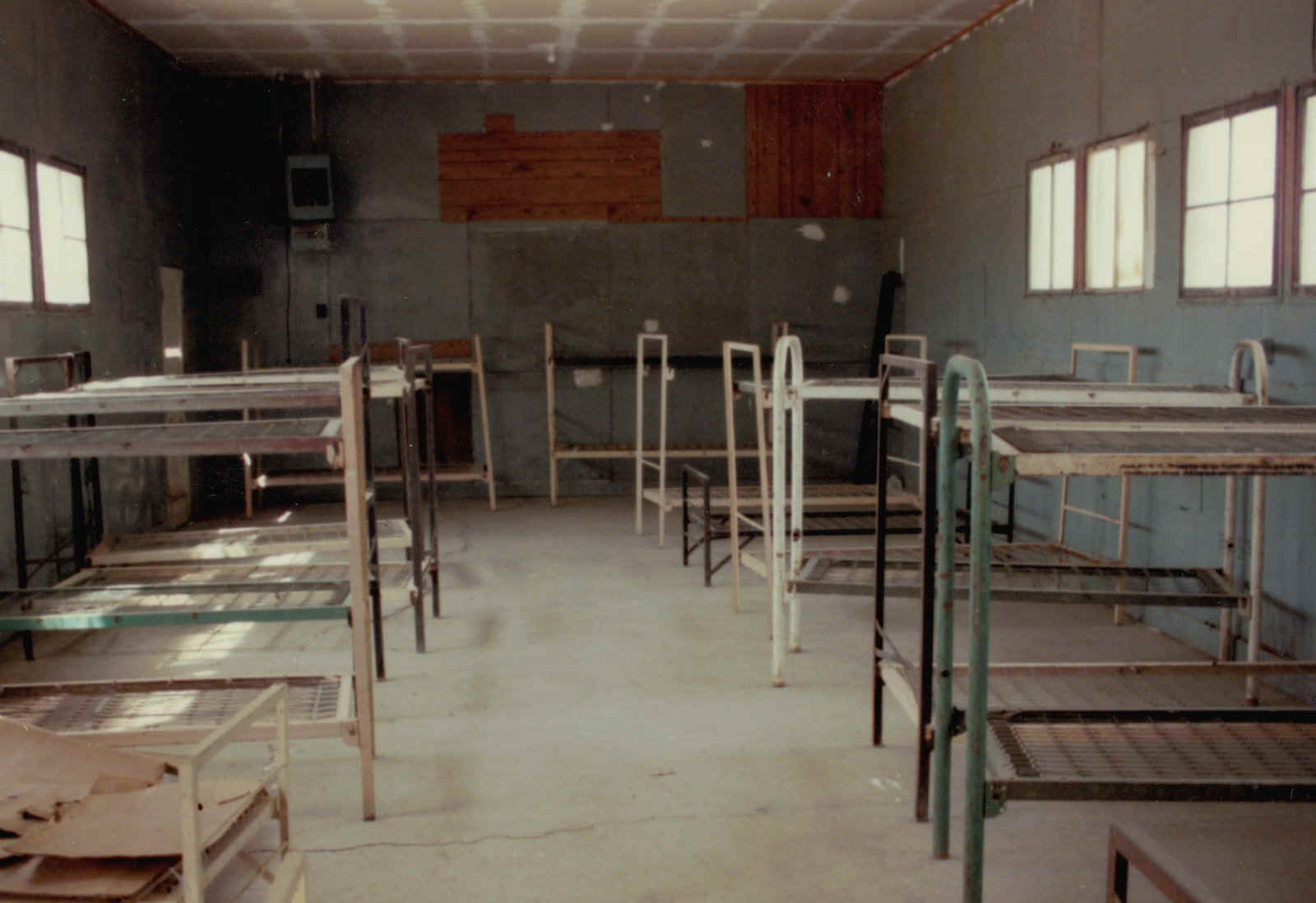








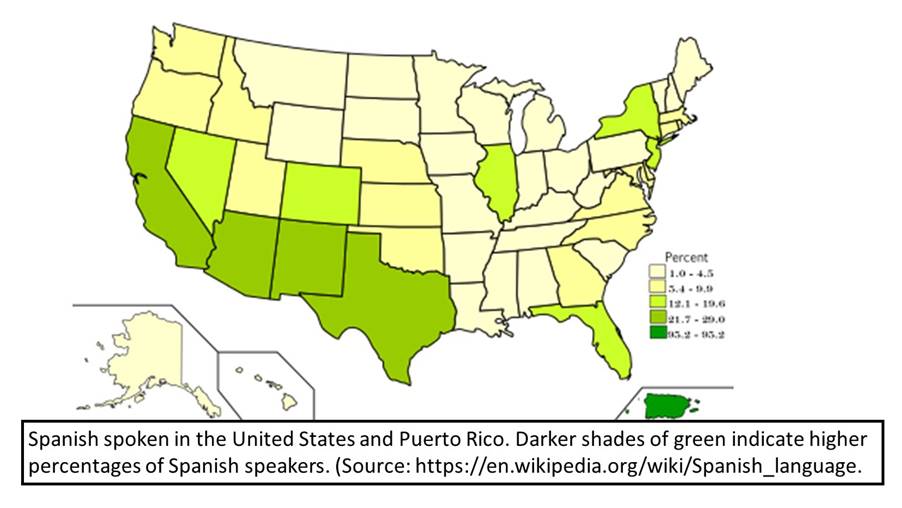

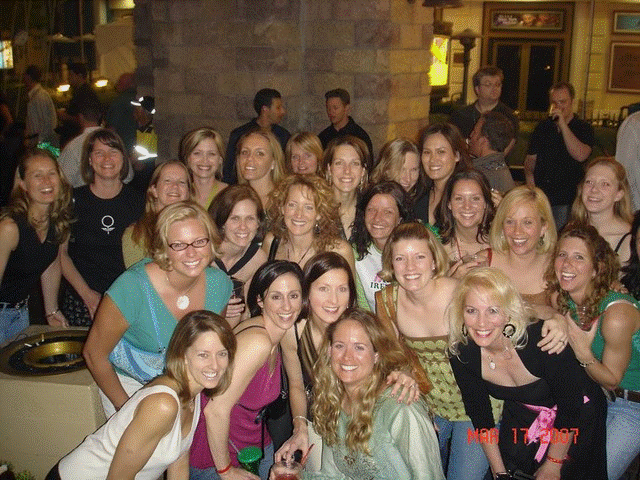




















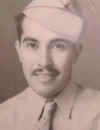













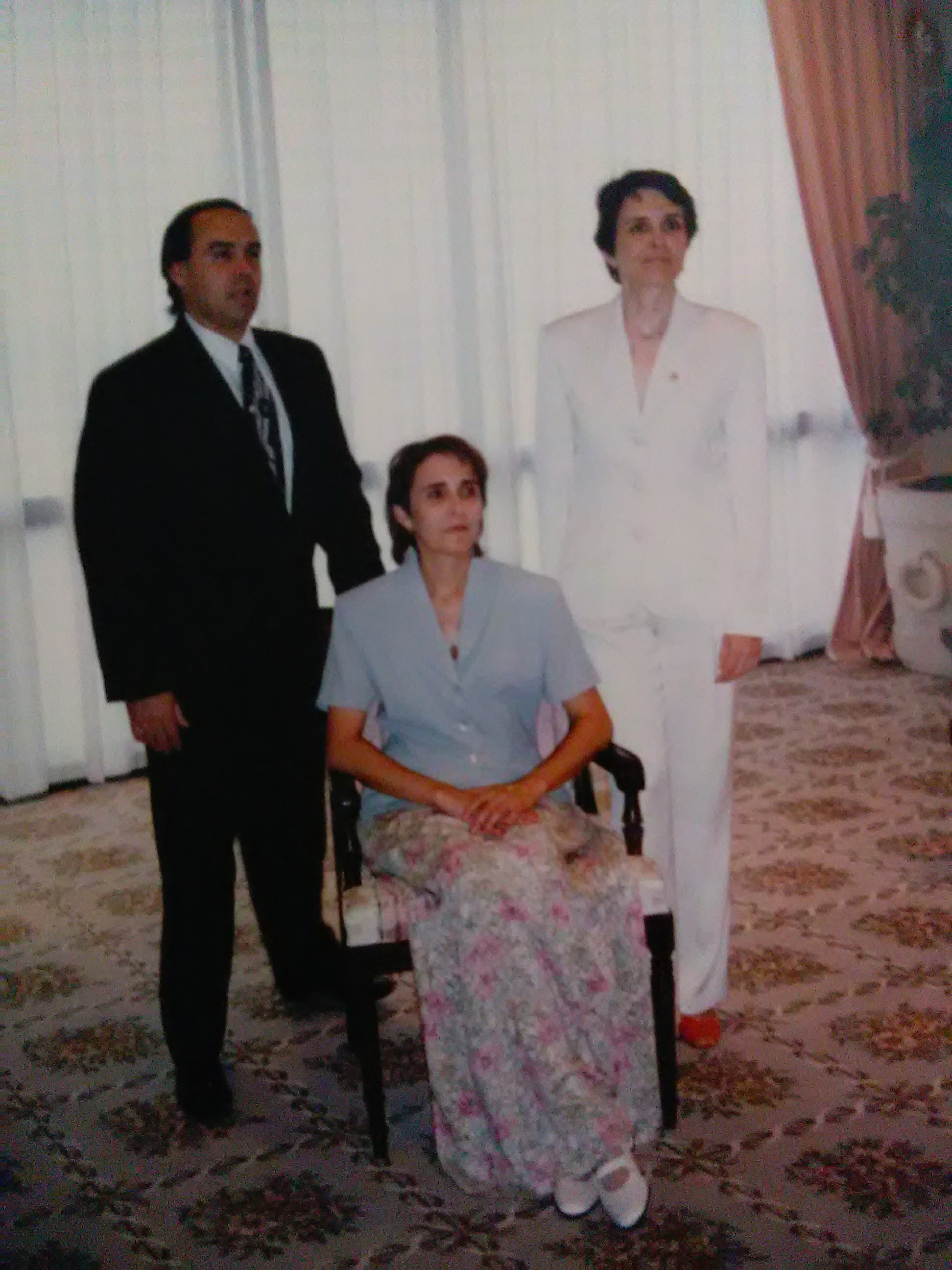
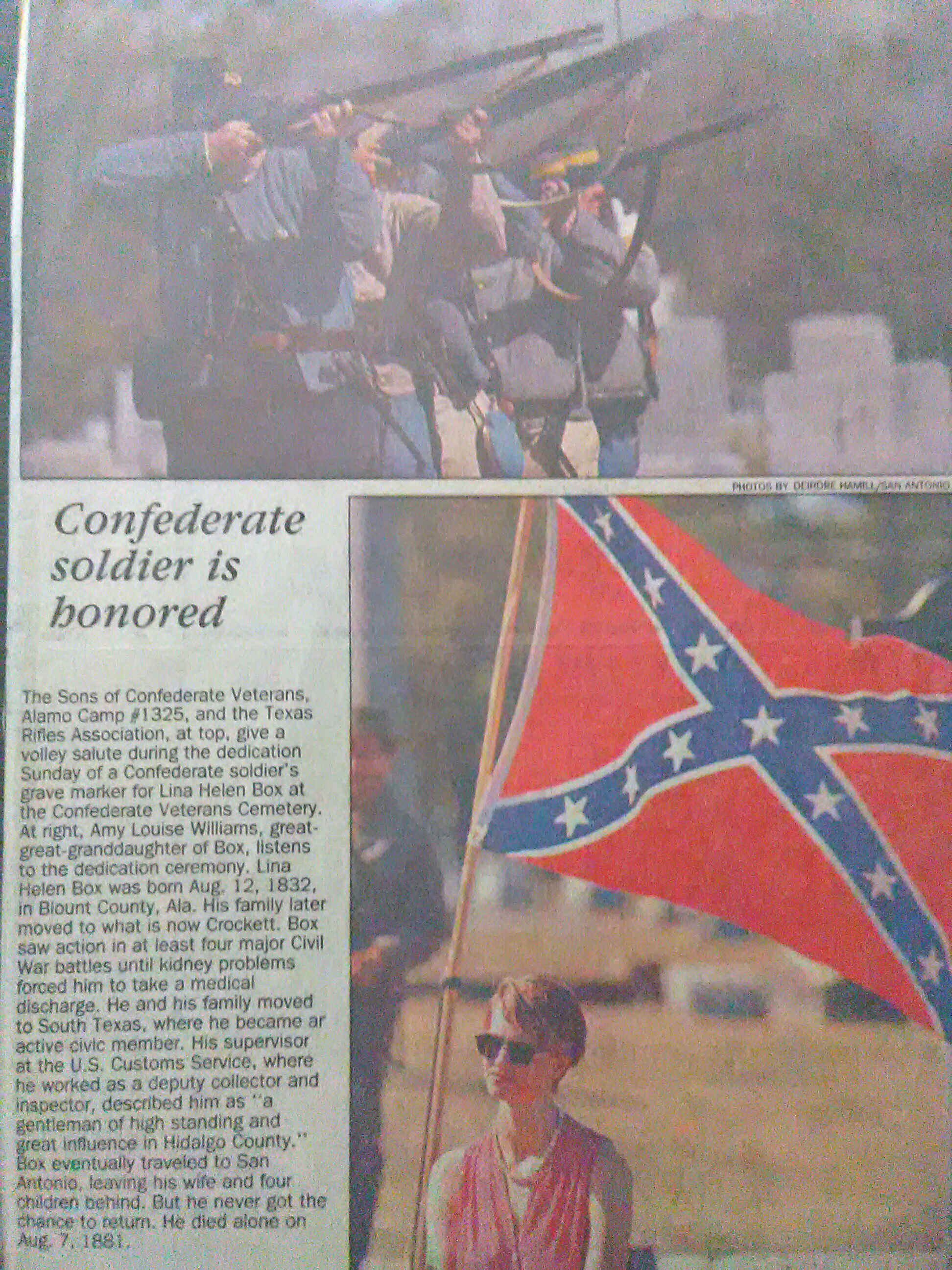



















 The 1st place winner in the category of author of the
Best Biography in the Non-fiction Awards section of the 20th
International Latino Book Awards Ceremony held on the California State
University Dominguez Hills campus in Carson City, California on
September 8, 2018 was Crystal City, Texas native, Jose Angel Gutierrez.
The 1st place winner in the category of author of the
Best Biography in the Non-fiction Awards section of the 20th
International Latino Book Awards Ceremony held on the California State
University Dominguez Hills campus in Carson City, California on
September 8, 2018 was Crystal City, Texas native, Jose Angel Gutierrez.





 By
By 







 When we moved to Manteca, I had never had a real
date. Being the new girls in town attracted a little
attention.
When we moved to Manteca, I had never had a real
date. Being the new girls in town attracted a little
attention. 





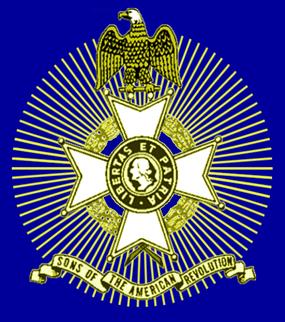
















 Returning
World War II veterans founded the Freedom Party in Duval County on March
26, 1952. Its purpose, according to Matias Garcia of San Diego, was to
oppose “the political rule of…George Parr.”
Returning
World War II veterans founded the Freedom Party in Duval County on March
26, 1952. Its purpose, according to Matias Garcia of San Diego, was to
oppose “the political rule of…George Parr.”  It
was about this time, while at the park, a new acquaintance told me
about making money helping deliver the morning milk. He told me had
done it, but didn’t like to wake up that early. Soon, I was telling
mama that I was going to help deliver milk in the morning and I would
not have to walk very far. I told her I had to set my alarm clock for
early, but didn’t tell her how early. It was about 5a.m. when I
arrived at the location close to Simpson Street and Central Avenue. I
asked the first man I saw if they could use some help on their truck I
was there for any thing they wanted to pay. The man at first was
amused, but soon he said okay and we would be leaving soon. I climbed
inside the milk truck, which I believe had Decoursey’s Milk Products
painted on the sides. He would hand me the small deliveries of only a
couple of bottles, and I would walk quickly to the house that he
pointed out to me. About two hours later, I could begin to feel the
heat from the morning sun. I was handed a quart of chocolate milk to
drink, so I would not get too thirsty. That drink tasted so good, as
the walking was starting to make me hungry and thirsty. About 11 a.m.
we finished the route and we pulled back into the building where we
started. He gave me a dollar and I thanked him. After walking home, I
went directly to bed, and I never really considered going back to
being an assistant on a milk delivery route.
It
was about this time, while at the park, a new acquaintance told me
about making money helping deliver the morning milk. He told me had
done it, but didn’t like to wake up that early. Soon, I was telling
mama that I was going to help deliver milk in the morning and I would
not have to walk very far. I told her I had to set my alarm clock for
early, but didn’t tell her how early. It was about 5a.m. when I
arrived at the location close to Simpson Street and Central Avenue. I
asked the first man I saw if they could use some help on their truck I
was there for any thing they wanted to pay. The man at first was
amused, but soon he said okay and we would be leaving soon. I climbed
inside the milk truck, which I believe had Decoursey’s Milk Products
painted on the sides. He would hand me the small deliveries of only a
couple of bottles, and I would walk quickly to the house that he
pointed out to me. About two hours later, I could begin to feel the
heat from the morning sun. I was handed a quart of chocolate milk to
drink, so I would not get too thirsty. That drink tasted so good, as
the walking was starting to make me hungry and thirsty. About 11 a.m.
we finished the route and we pulled back into the building where we
started. He gave me a dollar and I thanked him. After walking home, I
went directly to bed, and I never really considered going back to
being an assistant on a milk delivery route.
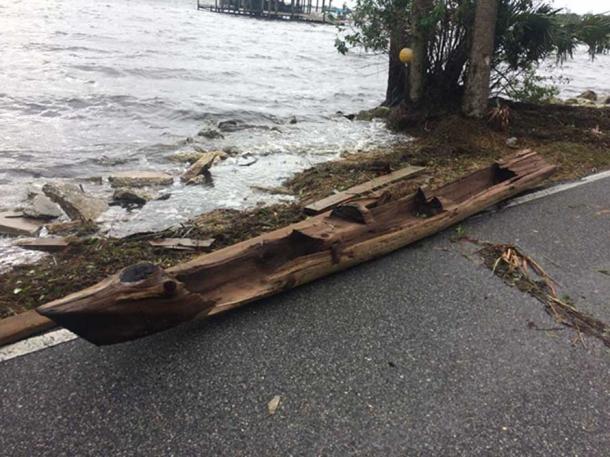
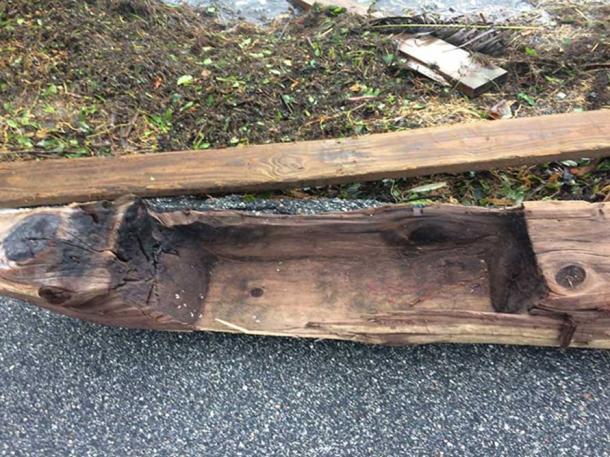






 In
1987, under the direction of Msgr. Earl Woods, chancellor and Dr.
Charles E. Nolan, archivist, the archdiocese began to publish its
sacramental registers. At that time, the decision was made
to publish only those with surnames, due to the difficulty of
indexing those without a surname. By 2004, 19 volumes
containing the records from 1718 to 1831 were published. The
Archdiocese uses the monies generated from the sales of its
published volumes to fund the preservation and conservation of the
earlier records.
In
1987, under the direction of Msgr. Earl Woods, chancellor and Dr.
Charles E. Nolan, archivist, the archdiocese began to publish its
sacramental registers. At that time, the decision was made
to publish only those with surnames, due to the difficulty of
indexing those without a surname. By 2004, 19 volumes
containing the records from 1718 to 1831 were published. The
Archdiocese uses the monies generated from the sales of its
published volumes to fund the preservation and conservation of the
earlier records. 



































